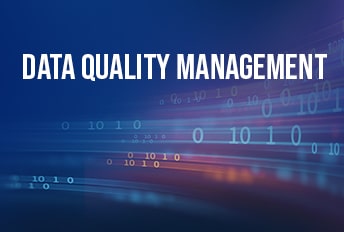
7 Data Quality Metrics to Assess Your Data Health
No matter their size, all organizations rely heavily on the data they collect and manage. This data ranges from customer information to sales records, employee performance, and more. However, if this data is inaccurate, outdated, or incomplete, it becomes more of a liability than an asset, making it more important to measure its health. To do so, they need data quality metrics relevant to their specific needs.
Organizations use data quality metrics, also called data quality measurement metrics, to assess the different aspects, or dimensions, of data quality within a data system and measure the data quality against predefined standards and requirements.
What is Data Quality?
Data quality measures the data’s ability to meet the criteria for completeness, accuracy, validity, uniqueness, timeliness, and fitness for purpose. Data that meets the requirements set by the organization is considered high-quality—it serves its intended purpose and helps in informed decision-making.
For instance, high-quality data in a healthcare system consists of precise and up-to-date patient records comprising patient demographics, medical history, diagnoses, treatments, and outcomes. Such a detailed dataset is maintained by trained data quality analysts, which is important for better decision-making and patient care.
These professionals conduct data quality assessments by individually assessing each data quality metric and estimating overall data health. The aggregate provides the organizations with a certain percentage to define the accuracy of data.
What are Data Quality Metrics?
Data quality metrics are specific indicators used to evaluate how good or bad a data set is. In other words, whether the data set is fit for purpose. As part of data quality management, these metrics help quantify the state of data using specific criteria that are objectively defined and applied. For example, you can set up particular data quality metrics to measure the percentage of incomplete records, count the number of incorrect entries, or determine the proportion of duplicate data.
Why is there a need for data quality measurement metrics?
Data quality metrics are not just a technical concern; they directly impact a business’s bottom line. Gartner reports that organizations lose an average of $12.9 million annually due to low-quality data. Furthermore:
- 41% of data warehouse projects are unsuccessful, primarily because of insufficient data quality.
- 67% of marketing managers believe poor data quality negatively impacts customer satisfaction.
- Due to low data quality, companies can lose 8% to 12% of their revenues.
Make Decisions Based on Data You Can Trust With Astera
Ensure your data's accuracy, completeness, and reliability using Astera's advanced profiling tools.
Start Your FREE 14-Day TrialNow, to mitigate the consequences of poor-quality data, there needs to be something that quantifies the current state of data, and to do that, you need data quality metrics. These metrics evaluate data in four key dimensions:
- Intrinsic: Focuses on the data’s credibility, objectivity, and reputation.
- Contextual: Emphasizes the relevance, timeliness, and completeness of data.
- Representational: Focuses on the formatting and presentation of the data.
- Accessibility: Deals with the ease of access to the data.
These data quality dimensions are essential to a data quality framework and help ensure data is well-rounded and reliable. Using data quality metrics, you can set targeted objectives to guide your teams in addressing commonly occurring data quality issues.
7 Data Quality Metrics to Track
Data quality metrics can vary depending on the sector and the data’s intended use. However, certain metrics are commonly adopted across many industries for their fundamental importance in assessing data health. Here are some frequently used data quality metrics examples:
-
Completeness Ratio
It refers to the extent to which a data set contains all the required or expected data elements. The completeness ratio measures the proportion of complete data entries compared to the total number of expected entries within the data set. This ratio helps us understand whether the data is complete and contains all the necessary information to draw correct conclusions.
For instance, a customer database requires customer information such as name, address, email, and phone number for each customer. If the database contains one or more missing fields, we would have a lower completeness ratio, indicative of lower data quality. Similarly, a high completeness ratio indicates complete data records useful for analysis.
-
Costs of Data Storage
Sometimes, data storage costs keep rising while the amount of usable data remains the same. It happens due to redundancy, duplications, and inconsistencies within datasets and is a sign of poor-quality data. Unhealthy data also complicates the backup and recovery processes, as finding and restoring accurate data becomes challenging in the event of data loss. Conversely, if your data operations remain constant but you observe a fall in data storage costs, it’s likely your data is of high quality.
-
Ratio of Data to Errors
The error ratio is a measure to determine the percentage of incorrect records in a dataset compared to the total number of records. The error ratio helps you identify problem areas by providing a percentage of flawed data.
To calculate the error ratio, you divide the number of records with errors by the total number of records in your data set. Suppose you have a list of 1000 addresses, and 100 of them contain errors such as wrong zip codes or misspelled city names. The error ratio would be 100/1000, which equals 0.10 or 10%. This result means that 10% of your address data is incorrect.
-
Timeliness Index
This data quality metric assesses how quickly data is collected, processed, and available for use. To do so, it looks at the time elapsed between an event’s occurrence and its data’s availability. For instance, if you need certain data ready within every 30 minutes, and it does, that data will be considered timely. A higher timeliness index indicates that data is readily accessible and up to date. Similarly, a lower timeliness index suggests inefficiencies or delays in data delivery or availability.
-
Amounts of Dark Data
Dark data refers to the data that an organization collects, processes, and stores but does not use for any purpose. Not all large amounts of data that organizations collect qualify as dark data. It becomes “dark” primarily because it is not actively used or managed.
Dark data can become a data quality problem because;
- It can contain outdated or inaccurate information, impacting the overall accuracy and reliability of your company’s data sets.
- It often includes unprotected sensitive information, exposing risk to data breaches.
Dark data does not necessarily imply poor data quality but can indicate areas where data quality could be compromised.
-
Consistency Score
Another data quality metric to keep track of is the consistency of data, which refers to its uniformity and coherence across various sources, systems, and time periods. The consistency score can be measured by setting a threshold that indicates the amount of difference that can exist between two datasets. If the information matches, it is said to be consistent. Typically, robust data integration strategies are employed to remove any inconsistencies in multiple data systems.
-
Duplication Rate
It measures the proportion of duplicate entries or records within a dataset. It confirms whether the given information in a dataset is unique and appears once only. Duplication can be present in datasets containing customer data but can be removed.
Data deduplication tools and algorithms identify and remove duplicate records from the dataset. The tools compare entries based on predefined criteria, such as similarity thresholds. They then merge or remove the duplicates accordingly.
How to Effectively Use Data Quality Metrics?
There isn’t a one-size-fits-all approach to data quality measurement metrics; they depend on your business’s aims, where your data comes from, and the rules you follow. Understanding these factors is the key to using data quality metrics effectively. Here is how you can use these metrics to their best.
Understand your Content Requirements & Data Model
To effectively implement data quality metrics, you need a clear understanding of what your data should look like and how it should behave — these are your “content requirements.” Alongside your content requirements you need a “data model,” essentially a blueprint of how your data is structured and relates within your database or data system. This model helps ensure that your data metrics are tailored to how your data is organized.
Define Your Data Quality Dimensions
Define data quality dimensions strategically so that you can use the most relevant data quality metrics to monitor data health. It allows you to employ a targeted approach that enhances the reliability and usefulness of your data. For example, when analyzing financial transactions, prioritizing data quality dimensions like accuracy and consistency ensures that the data is uniform and correct.
Alternatively, if you are managing a marketing campaign, prioritizing the completeness and relevance of customer data enables you to tweak your messaging effectively. As you refine these key dimensions, you will see clear improvements in your metrics, such as higher data accuracy and greater completeness, depending on your focus areas.

Set Clear Goals for Your Data Quality Metrics
Setting realistic data quality goals can improve your metrics’ overall performance. For example, suppose you want to ensure your customer information is almost always complete. Setting a target range based on your goals and industry standards, such as having no more than 3% of your data incomplete, establishes clear expectations and ties your data quality metrics to specific outcomes, such as improving a user’s shopping experience.
Moreover, documenting particular use cases can help your teams realize the importance of aligning data quality with business goals and demonstrate how these metrics fit into your broader business strategy.
Regularly Monitor Your Data Quality Metrics
Keep a close eye on your data quality metrics and update them as needed. Continuing with the example of setting a target range or number, if, after monitoring, you discover that your customer data shows more than 3% missing values—higher than your set target—you should evaluate further to identify the underlying problems.
While the initial reaction might be to reevaluate your entire data management strategies, examining more specific and immediately relevant factors is recommended. Issues such as data entry errors or flaws in data collection methods are often the culprits and should be addressed before considering broader strategic changes.
Keep Your Data Quality in Check with Astera Data Pipeline Builder
While managing data quality can be challenging as it costs companies a lot of time and money, it can be improved using key data quality metrics. These metrics provide a clear, quantifiable way to assess and enhance data accuracy, consistency, and reliability. Integrating a comprehensive tool like Astera can be particularly effective to enhance these efforts further.
Astera Data Pipeline Builder’s AI-powered, all-in-one platform enhances data management by offering features such as cloud-based data prep, automated data cleansing transformations, customizable data quality rules, and thorough data profiling and validation, ensuring that data meets quality standards and is managed efficiently at scale.
Start with a 14-day free trial and experience how Astera Data Pipeline Builder can transform your data quality management today.
 Astera AI Agent Builder - First Look Coming Soon!
Astera AI Agent Builder - First Look Coming Soon!

